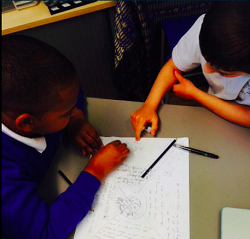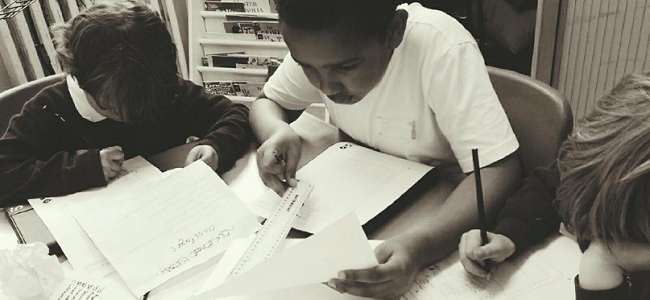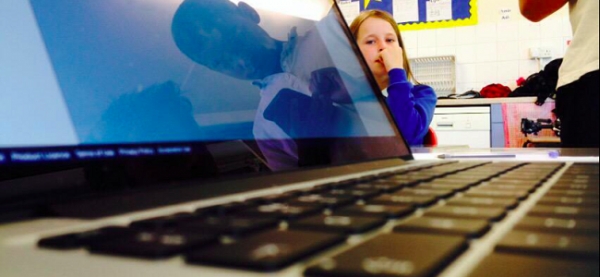- Students retain content longer and have a deeper understanding of what they learn (Penuel & Means, 2000).
- More effective than traditional methods for teaching Maths, Economics, Science, Languages and other disciplines (Finklestein et al, 2010).
- On high stakes testing, PBL taught students outperform traditionally taught students (Parker et al, 2010).
- Students demonstrate better problem solving skills than students taught in more traditional classes (Finklestein et al, 2010).
- PBL students demonstrate better engagement and motivation to learn, and have better attendance (Walker & Leary, 2009).
"Having individual lessons per subject amplifies a teacher’s strengths, but also their weaknesses."
It all makes for a strong case for developing your own PBL for your students. There are plenty of organisations who offer ‘creative’ and PBL driven curriculums, but before the school signs up and take on another expense, I want to talk through how to develop your own projects.
Recently I’ve been working with a Primary academy to develop their curriculum for the year ahead. Their key target is to improve Science, Geography and Computing subjects in particular. Like most schools they’re time-limited, due to the breadth of lessons and work they must get through. Through years 1 - 6, the school needs to deliver 234 modules across 13 subjects. Many teachers now take two year groups in Primary and deliver between 30-40 modules. Having individual lessons per subject amplifies a teacher’s strengths, but also their weaknesses, and not everyone can be great at everything. Teaching therefore become a knowledge challenge, and also a time challenge.
It’s created a system where teachers require a huge breadth of knowledge across multiple subjects, yet they are left with very little time to develop areas where they may feel weaker. Having looked at high-performing education systems such as those in Scandinavia, Singapore and Canada, many schools in these countries have been incorporating PBL into primary teaching since the mid 90s. I think it’s beyond time we do the same in the UK.
Project Teddy Island
Below is an example of a PBL curriculum for the Year 2 Spring term (minus Literacy and Maths).
DT: Textiles: a picnic blanket for a teddy.
HISTORY: Queen Elizabeth I.
GEOGRAPHY: Island life / seaside.
SCIENCE: Habitats.
PE: Ball skills / games.
RE: Jesus, the storyteller.
ART: Mark making.
PSHCE: Drugs & alcohol risks.
MUSIC: Elizabethan recorder.
COMPUTING: Digital content.

Teachers here have 10 weeks to deliver these modules to students. Taking a PBL approach reduced that to just 3 weeks, and all the same content was delivered. How is this possible? There’s some very good research-led reasons why, but sometimes the most obvious answer is the most important - motivation. Giving the modules a project context meant children were much more engaged with their learning, focusing for longer and working to a deeper level. PBL creates vast differentiation for all, because the work is to the best of the student’s ability. In Primary classrooms, teachers often comment that the two biggest challenges to learning are lack of understanding (learning lacks sufficient differentiation) and lack of focus / behavioural disruption (learning lacks interest for learners). Before we go further, let me break down the project for you.
We took inspiration from the children’s book Kensuke’s Kingdom (which is used at the school), so teachers are familiar with the desert island scenario. In the book, a young boy named Michael falls overboard and is washed ashore to a desert island. We substituted Michael for teddy.
DT: Children make a picnic blanket for teddy, who is about to leave on a fantastic voyage.
HISTORY: The voyage is set in the time of Queen Elizabeth, an age of exploration and discovery.
GEOGRAPHY: Teddy is washed ashore on a desert island, and must explore the island life and seaside.
SCIENCE: Teddy explores and finds different areas on the island. He learns about habitats.
PE: Teddy meets a village of natives, who invite him to play ball games. Children must practice to join in.
RE: The natives are religious, and share with Teddy the stories of Jesus.
ART: Teddy lives with the natives, and creates cave drawings and paintings with them using mark making techniques.
PSHCE: A cargo ship runs aground and alcohol and drugs are washed ashore. A native consumes some and dies, highlighting the dangers of alcohol and drugs.
MUSIC: The natives have a funeral with music accompaniment. They play songs on the Victorian recorder.
COMPUTING: Each class develops their story together, and creates an interactive app using AppFurnace. This satisfies the whole primary computing curriculum.
This project is grounded in the seven key criteria for successful PBL. These are:
"Giving the modules a project context meant children were much more engaged with their learning."
1. Challenging problem: An open ended task for students requiring plenty of imagination and creativity.
2. Sustained inquiry: A three week project in itself, incorporating all subjects.
3. Authenticity: It’s student led, and the final project is a culmination of their concerns, interests, culture, identities and life issues.
4. Student voice and choice: Students have full ownership of the development of the project.
5. Reflection: The project is collaborative, so requires regular student discussion and reflection.
6. Critique and revision: Developed in the regular student discussion stages.
7. Public product: Produced into an app which can be published onto Apple’s App Store for a worldwide audience.
In conclusion, hopefully you can see the power of PBL for the classroom. It continues to surprise me why it’s not more popular here and something only ‘creative’ or ‘alternative’ schools prescribe to. The proof in both research and teaching practice is well established, and the only thing stopping you from exploring PBL is your own choice. There’s plenty of PBL examples available online, www.bie.org is an excellent starting point, but go beyond what others have already created and create something of your own. It takes a little creativity, but the real fun is in designing your own projects to get stuck into at school. You already have all the skills needed, you just need to get a little practice and you’ll be flying before you know it.

Do you use PBL in your school? Share your comments below!


















